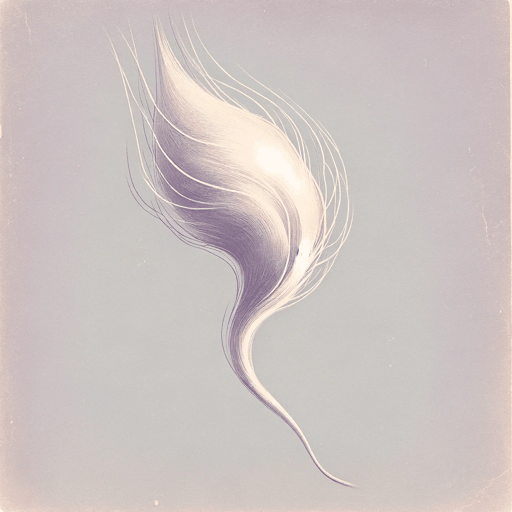17 pages • 34 minutes read
Gwendolyn BrooksThe birth in a narrow room
Fiction | Poem | Adult | Published in 1949A modern alternative to SparkNotes and CliffsNotes, SuperSummary offers high-quality Study Guides with detailed chapter summaries and analysis of major themes, characters, and more.
Summary and Study Guide
Overview
Drawing on the poet’s experiences growing up during the Depression in Bronzeville, the name given to the predominantly Black neighborhoods of Chicago’s South Side, Gwendolyn Brooks’s “the birth in a narrow room” recounts the earliest years of a young Black girl amid the disenfranchisement and limited expectations she faces in post-war segregationist, patriarchal America. Despite the reality of growing up in the narrow rooms of an inner-city home, however, the girl thrives, her tender imagination animating her young spirit.
“the birth in a narrow room” was the opening poem in a cycle of 11 poems about the experiences of the childhood and young adulthood of an ebullient and sensitive inner-city Black girl. The cycle appeared as the first section in Brooks’s 1949 landmark Pulitzer Prize-winning collection Annie Adams. “the birth in a narrow room,” however, can be read as a stand-alone poem: part psychological study of a complex character and part stinging social commentary about the heartbreaking reality of impoverishment and its impact on a developing child. With its upcycling of traditional poetic forms—its subtle rhythms, its elegant diction, its elliptical lines—the poem fuses Brooks’s investigation into post-war racial and gender identity with her careful study of and respect for the subtle prosody and complex aural effects of Modernist poetry.
Poet Biography
Although now considered one of the iconic voices in Chicago’s post-war Black Renaissance, Gwendolyn Brooks was born in Topeka, Kansas, in 1917. Her family moved to Chicago’s South Side where her father, who had dreams of being a physician, worked as a custodian. Brooks’s mother, a teacher and a formidable classical pianist, not only instilled in her daughter a love of literature and an ear for the subtleties of music but as well the rewards of working with young people.
Brooks published her first poems when she was in her teens. After graduation from Chicago’s Woodrow Wilson Junior College in 1939, Brooks immersed herself in neighborhood community action groups. Although her first collection, A Street in Bronzeville, received critical plaudits, it was Annie Allen (1949) that established Brooks as a major figure in Chicago’s Black Renaissance. Brooks received the Pulitzer Prize, the first Black writer to receive a Pulitzer. Years later, Brooks recalled how when she got the phone call notifying her of the prestigious award, she and her family were sitting in the dark of their Bronzeville flat, unable to pay the electric bill.
Over the next decade, Brooks continued to publish poems that illuminated the small tragedies and quiet disappointments of Black families living in segregationist America. In the late 1960s, however, during the turbulent street birth of the civil rights movement, Brooks was influenced by the angry uncompromising rhetoric of that movement’s young poets and activists. She infused her poetry with broader social commentary. In turn, she encouraged young Black poets, conducted writing workshops around Chicago, and undertook national reading tours. In addition, Brooks accepted numerous teaching posts and appointments as a writer-in-residence. From 1985 to 1987, Brooks served as America’s Poet Laureate, the first Black woman so honored.
Brooks continued to write poetry until her death in 2000 at the age of 83. Her tombstone in Lincoln Cemetery just outside Chicago is of an upright open book in black marble listing the titles of Brooks’s most loved volumes of poetry.
Poem Text
Brooks, Gwendolyn. “the birth in a narrow room.” 1949. The Morgan Library.
Summary
The poem opens with its central figure denied a name, denied an identity, denied any circumstances of time or place, denied even a gender. The figure is pure need. The reference to a “western country” hints at a Black family; within African American cultural history, the United States would be a western country.
We understand only that the “something” (Line 1) of the poem is new and is crying; the title implies that the “something” is a newborn. The poem’s faith in the raw energy and pure potential of a newborn is suggested by the phrase “blurred and stupendous” (Line 2). The phrase “Wanted but unplanned” (Line 2) gives this something new contextual detail: its parents were caught by surprise by the pregnancy, but now they have embraced their newborn. They want this gentle and innocent newborn in their lives.
The poem then shifts to recreating the newborn’s pure perception. Lines 3-6 inventory the world about the newborn. The restless and curious eye takes in the stuff of its immediate world: a milk-glass fruit bowl, a ball of twine, its parents’ winks (depending on the circumstances and most likely the time of day, either happy or weak), an iron pot, bright yellow apron. But amid this random inventory, the baby begins to take shape, to evolve into personhood. We learn the baby is “bashful” (Line 5) and keeps apart. In that, the newborn seems fragile, vulnerable—a “china child” (Line 5). We learn the newborn is happily prone to accidents given its restless curiosity and its urgent need to explore its world. Reaching for the fruit bowl, the child spills “pretty” (Line 6) cherries on the floor. The adjective suggests how the baby is drawn to the fetching lure of the objects, to pretty things, without regard to the accident attempting to touch those objects caused. The child is driven by the urgencies of the senses.
With the second stanza, as time passes, the senses develop and the child taps into its imagination. And the newborn emerges into gender. She begins to notice how narrow, how “pinchy” (Line 8) her house is and how few things she has. She has evolved to the point she notes her family’s limited circumstances. She feels diminished—“I am not anything” (Line 9). Like any child, she is prone to boredom—she has got not anything to do, the fractured grammar suggesting her tender age. Nevertheless, despite her narrow circumstances, she grandly “prances with gods and fairies” (Line 11) in the family’s backyard. She exists innocently within the rich world of her imagination. She prances grandly around the backyard pump (another indication of the family’s impoverishment) and under the yard’s elms and grapevines in a splendid mock-adventure that only she understands. Her imagination creates a world that is dazzling, enchanting. She prances “blithely” (Line 12), happily oblivious to the implications of her family still relying on an outhouse (the privy), that is still without indoor plumbing. She joyously cavorts through clouds of distressing big bugs and among and around the discarded litter in the yard, empty peach cans and jelly jars. She is happily in her own world—the poem introduces no other person: no parents, no siblings, no friends. She is her play-world.
Related Titles
By Gwendolyn Brooks

A Bronzeville Mother Loiters in Mississippi. Meanwhile, a Mississippi Mother Burns Bacon
Gwendolyn Brooks

A Sunset of the City
Gwendolyn Brooks

Boy Breaking Glass
Gwendolyn Brooks

Cynthia in the Snow
Gwendolyn Brooks

Maud Martha
Gwendolyn Brooks

my dreams, my works, must wait till after hell
Gwendolyn Brooks

Speech to the Young: Speech to the Progress-Toward (Among them Nora and Henry III)
Gwendolyn Brooks

The Ballad of Rudolph Reed
Gwendolyn Brooks

The Blackstone Rangers
Gwendolyn Brooks

The Chicago Defender Sends a Man to Little Rock
Gwendolyn Brooks

The Crazy Woman
Gwendolyn Brooks

The Lovers of the Poor
Gwendolyn Brooks

The Mother
Gwendolyn Brooks

the rites for Cousin Vit
Gwendolyn Brooks

To Be in Love
Gwendolyn Brooks

To The Diaspora
Gwendolyn Brooks

Ulysses
Gwendolyn Brooks

We Real Cool
Gwendolyn Brooks

